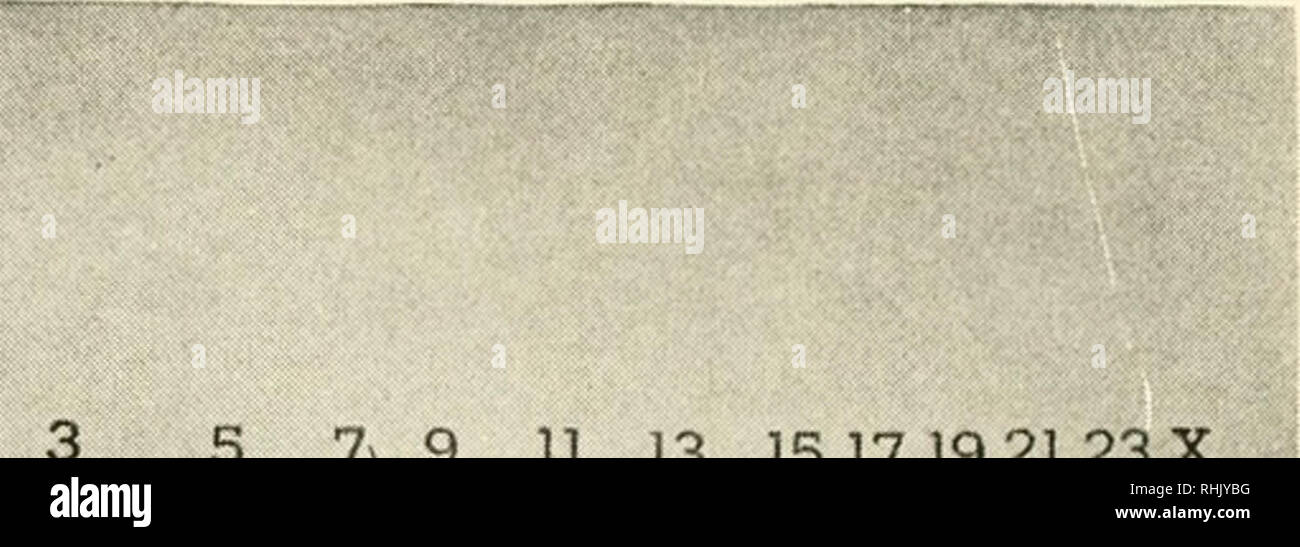. Biology and man. Biology; Human beings. 5 7 9, 11 13 15 17 19 21 23 X 4' 6 8' 10' 12 14 16 18 20 22 Y I'aililrl' CHROMOSOMES IN MAN The 24 pairs of chromosomes are shown in order of size. The members of each pair ore indistinguishable, except that the smallest, marked X and Y, differ in size in the male. During reduction division, when sperm cells are being formed, the X goes to one sperm and the Y to another. All eggs, however, have the X chromosome. Struc- tural variations which the microscope may reveal among chromosomes of different individuals cannot be related to personal or rac

Image details
Contributor:
Library Book Collection / Alamy Stock PhotoImage ID:
RHJYBGFile size:
7.1 MB (291 KB Compressed download)Releases:
Model - no | Property - noDo I need a release?Dimensions:
2664 x 938 px | 22.6 x 7.9 cm | 8.9 x 3.1 inches | 300dpiMore information:
This image is a public domain image, which means either that copyright has expired in the image or the copyright holder has waived their copyright. Alamy charges you a fee for access to the high resolution copy of the image.
This image could have imperfections as it’s either historical or reportage.
. Biology and man. Biology; Human beings. 5 7 9, 11 13 15 17 19 21 23 X 4' 6 8' 10' 12 14 16 18 20 22 Y I'aililrl' CHROMOSOMES IN MAN The 24 pairs of chromosomes are shown in order of size. The members of each pair ore indistinguishable, except that the smallest, marked X and Y, differ in size in the male. During reduction division, when sperm cells are being formed, the X goes to one sperm and the Y to another. All eggs, however, have the X chromosome. Struc- tural variations which the microscope may reveal among chromosomes of different individuals cannot be related to personal or racial traits Chromosome Maps We have seen that it was through the idea of linkage that Morgan and his fellow workers came to place certain genes to- gether in particular chromosomes—that is, from fcllowing up exceptiotis to Mendel's law of independent assortment. Since a chromosome is generally an elongated structure, it seems reasonable to suppose that the genes are probably arranged along the length of the chromosome. Now the question naturally arose. Is there any way of locating particular genes more exactly along any particular chromosome? This problem was solved by studying the exceptions to the idea of linkage. Characters are coupled; but linkage is not 100 per cent consistent. Certain pairs or groups of linked characters become separated in succeeding genera- tions more frequently than others. If we suppose that the genes are arranged in a series, we should expect that those which are close together in a chromo- some would seldom become separated, whereas those at opposite ends of a chromosome might become separated more frequently. But what happens in the chromosomes to produce such a break in the chain (see illustration, p. 494).? The observed fact that parts of chromosomes sometimes break off and cross over to the other member of the pair seems to run parallel with the experimental fact that characters which are usually coupled together in suc- 491. Please note that t